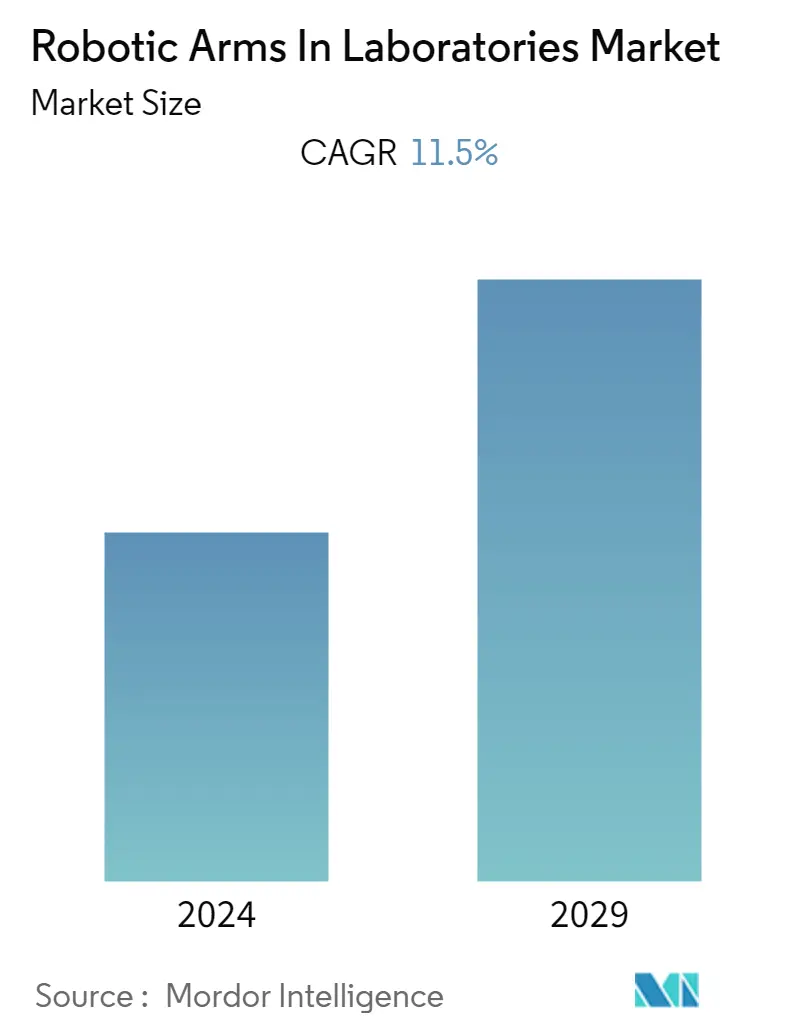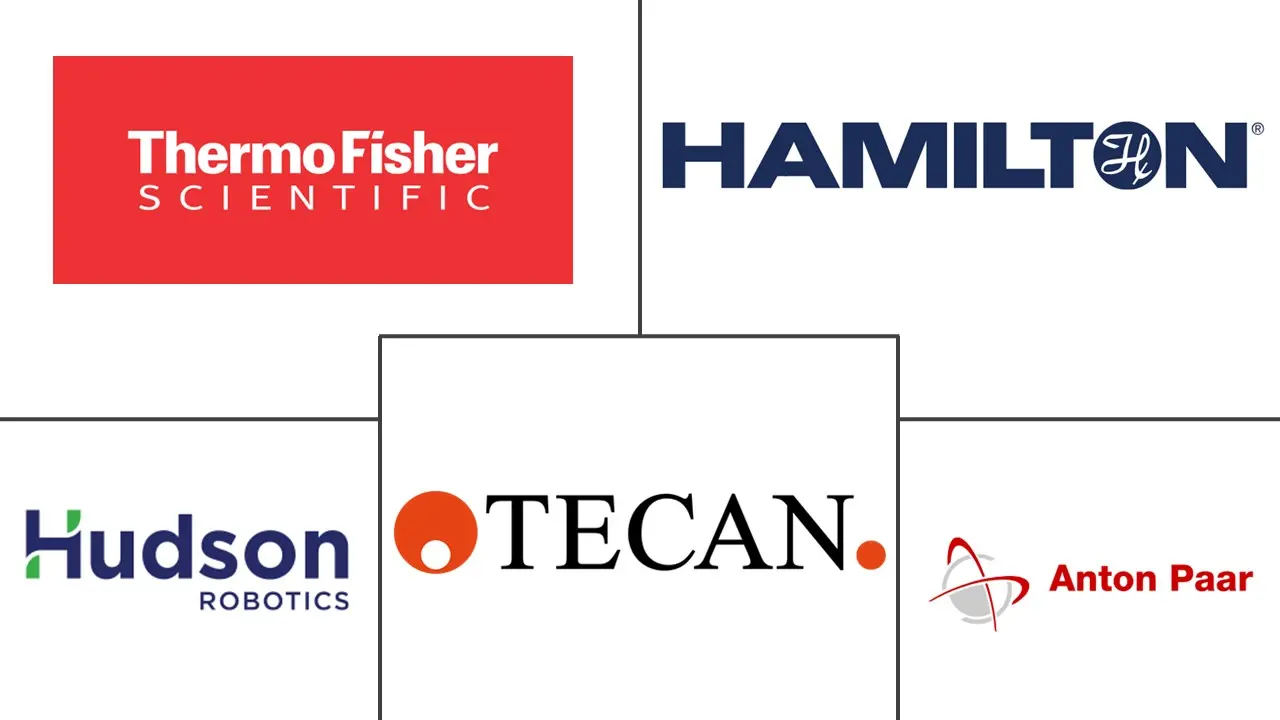Market Size of Robotic Arms In Laboratories Industry

| Study Period | 2019 - 2029 |
| Base Year For Estimation | 2023 |
| CAGR | 11.50 % |
| Fastest Growing Market | Asia Pacific |
| Largest Market | North America |
| Market Concentration | Medium |
Major Players
*Disclaimer: Major Players sorted in no particular order |
Need a report that reflects how COVID-19 has impacted this market and its growth?
Robotic Arms In Laboratories Market Analysis
The Robotic Arms in Laboratories Marke was valued at USD 5.3 billion in the previous year and is expected to grow at a CAGR of 11.5% during the forecast period to reach USD 10.18 billion by the next five years. Robotic arms are rapidly being used in research laboratories for applications that need flexibility, effective space use, and seamless integration of lab peripherals. With the simplicity with which the arms may be programmed, the adoption has expanded over time. Preparing samples, running analytical equipment, and handling sample material are typical duties these robots do. As a result, lab automation is the primary driver of laboratory robotic arm use.
- Robotic arms are widely used in assay development, cell biology, bioassay validation, DNA quantification, PCR setup, and cleanup. These are optimized for handling standard labware, like microplates, reservoirs, and disposable tip racks. These are also helpful for loading and unloading microplate-based lab instruments, such as readers, washers, and reagent dispensers. Further, biomedical research has employed robotic arms primarily to process samples. Their influence in the drug discovery process remained limited, which explains why the development, testing, and commercialization process takes 15 to 20 years on average. Recent improvements in laboratory automation and robotics, particularly in AI and ML, have created a new frontier in life science and pharmaceutical. Tasks can now be completed at rates and precision that exceed human competence.
- For instance, the FDA's Center for Drug Evaluation and Research (CDER) recently approved 50 brand-new pharmaceutical and biological products. 33 of the 50 novel medications and biological products approved for usage had tiny molecules, while 17 were monoclonal antibodies and other large molecules. However, the number of biological approvals has constantly risen during the past few years. Such huge approvals for drugs will drive the studied market.
- Furthermore, due to its apparent benefits, including stability, high precision, repeatability, many degrees of freedom, mobility, and remote control, collaborative robotic arms have been used with medical imaging and operations for a while. In many surgical procedures, robotic surgery is now a reality. According to National Health Service (United Kingdom), 43.3 million imaging tests were reported between April 2021 and March 2022 in England. 3.67 million imaging tests were said to have been performed in March 2022. The most prevalent type of imaging in March 2022 was plain radiography (X-rays), with 1.82 million cases, followed by diagnostic ultrasound (0.85 million), computerized axial tomography (CT-scan), and magnetic resonance imaging (0.56 million).
- Moreover, more tests are being sent to the lab due to a higher number of patients and an increasing number of tests available. However, the need for more staff to process these samples leaves medical facilities needing help. According to the Bureau of Labor Statistics, the demand for lab workers is growing. For instance, the American Association of Medical Colleges (AAMC) predicted that by 2030 there would be a shortage of 42,600 and 121,300 clinicians by the end of the following decade. This would drive the demand for the studied market.
- Moreover, there has been increased pressure on the laboratories to increase testing labs capacity and speed even in Post-COVID. With the increase in the number of samples being tested every day, the market studied has been witnessing a growth in the developments of automation systems by vendors, which creates opportunities for the studied market growth. For instance, a robotic arm known as"AutoVac" was announced to be capable of extracting roughly 12 doses of the AstraZeneca vaccine from a single vial in under four minutes. A team of researchers at Thailand's Chulalongkorn University created this device. Typically, a medical expert can manually dispense up to 10 dosages from a single vial. Compared to the norm, this robotic arm can increase production by around 20%. The device accurately promises 20% of doses (between 10 and 12) from each vaccination vial.
- Furthermore, the Russia-Ukraine war is impacting the supply chain of electronic components. The dispute has disrupted the supply chain, causing shortages and price increases for raw materials, affecting robotic arms manufacturers and potentially leading to higher costs for end-users.
